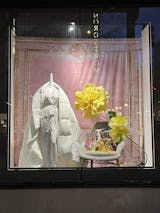
how to blur background in light room
Share
Original title: How does SLR photography achieve a beautiful background blur effect? Use the aperture well and others admire the goddess.
Blurred photos with distinct layers and prominent themes can create a beautiful and exquisite visual sense of the blockbuster, and many photography buddies are no strangers.
But don’t think that with a single-shot camera, you have learned a few tricks to take the blur effect and you think you can take this kind of photo. If you want to handle it with ease, the effect is outstanding, if the knowledge of the aperture that is easily overlooked does not understand everything. no good!

Thinking so, you must have never used a DSLR? The aperture is actually an adjustable size circular hole formed by several metal sheets in the lens. We control the amount of light reaching the camera's photosensitive element by adjusting the size of these aperture holes.
The visible aperture is not a circle with its own light, but a circle that controls the light. To put it bluntly, we determine how much light can enter the camera through the size of the aperture of this aperture.
Why does the camera have an aperture? Doesn't the shutter determine how much light can enter the camera by controlling the exposure time?
This is simply a question that hits the depths of the soul. You have a very thorough understanding of the shutter, but the reason why the camera has an aperture is because it is necessary for imaging!

We know that all cameras use the principle of small holes for imaging, and the aperture of the camera is equivalent to cardboard with small holes, and the wall is equivalent to the photosensitive element. The difference is that the small hole of the camera can be changed. The size, that is, the size of the aperture that we call.
So, the aperture is indispensable for the camera, we control the amount of light entering the camera by adjusting the size of the aperture.

From the imaging principle of the camera and the function of the aperture, it is not difficult to infer that different apertures will affect the brightness, image quality, and depth of field of the photo.
After playing SLRs, we must know that the aperture size we are talking about is expressed by "f/number". The smaller the value after "f/", the larger the aperture, and the larger the value, the larger the aperture. small. For example, the aperture of f/4 should be larger than the aperture of f/8.

This aperture F value has a calculation formula: aperture F value = lens focal length / lens aperture diameter. Even if you score seven points in the math test, you can find that these aperture values vary by 1.4 times.
It turned out that opening the aperture by one level requires doubling the area of light passing through, because the area of the circle is proportional to the square of the diameter, that is to say, the area of the aperture is proportional to the square of the aperture diameter, so the aperture diameter You need to increase the root number by 2 times = 1.4 times~
With the other settings unchanged, the larger the aperture, the brighter the image, because the larger the aperture, the more exposure per unit time, the brighter the image will naturally be, and vice versa.
In actual shooting, you may also have heard that there is an optimal aperture, because in each stop of the same lens, there is always an aperture that has better image quality than other gears. This optimal aperture It is generally the middle position of the lens aperture series, such as f/8, f/11, etc.
So, adjusting the size of the aperture is to adjust the brightness of the screen on the one hand, and also to obtain the best image quality on the other hand. Of course, there is another point to get the artistic effect of the blurred background.
3. How to adjust the aperture to take pictures with blurred background?Don't beat me to death. After talking about the knowledge of aperture for a long time, I finally mentioned the key points here, but I still have to start with the principle of camera imaging.

In the process of small hole imaging, when the hole is relatively small, the light reflected from different parts of the object will reach different parts of the wall instead of overlapping each other on the wall, so the image on the wall will be clearer ; And when the hole is relatively large, the light will overlap and the image will not be clear.
In other words, objects smaller than holes or parts of objects smaller than holes cannot be imaged!
Corresponding to the camera, the image is clear when the aperture is small, and vice versa. Therefore, if you want to take photos with bokeh effects, the most important thing is to have a large aperture, that is, the F value as small as possible, such as f/2.8, f/4, etc.
Actually, the technical term for background bokeh photos we often say is a small depth of field photo, that is, to take a small depth of field photo first requires a large aperture, and it will also be affected by the focal length, shooting distance, and so on.
In simple terms, the longer the focal length, the shallower the depth of field, the more obvious the blur effect; the closer the shooting distance (the distance between the shooting camera and the subject), the shallower the depth of field, the more obvious the blur effect; the subject The farther the background is, the more obvious the blur effect.

To sum up, if you want to take photos with a small depth of field, that is, a photo with a blurred background, you can use a large aperture, a long focal length, a close-up distance and keep the subject away from the background. Of course, these elements do not have to be achieved at the same time, as long as a few points are met, a good blur effect can be produced.
This is all the detailed knowledge about the aperture. If you have a thorough understanding of these and don't know how to take a background blur photo, you will kill me.







